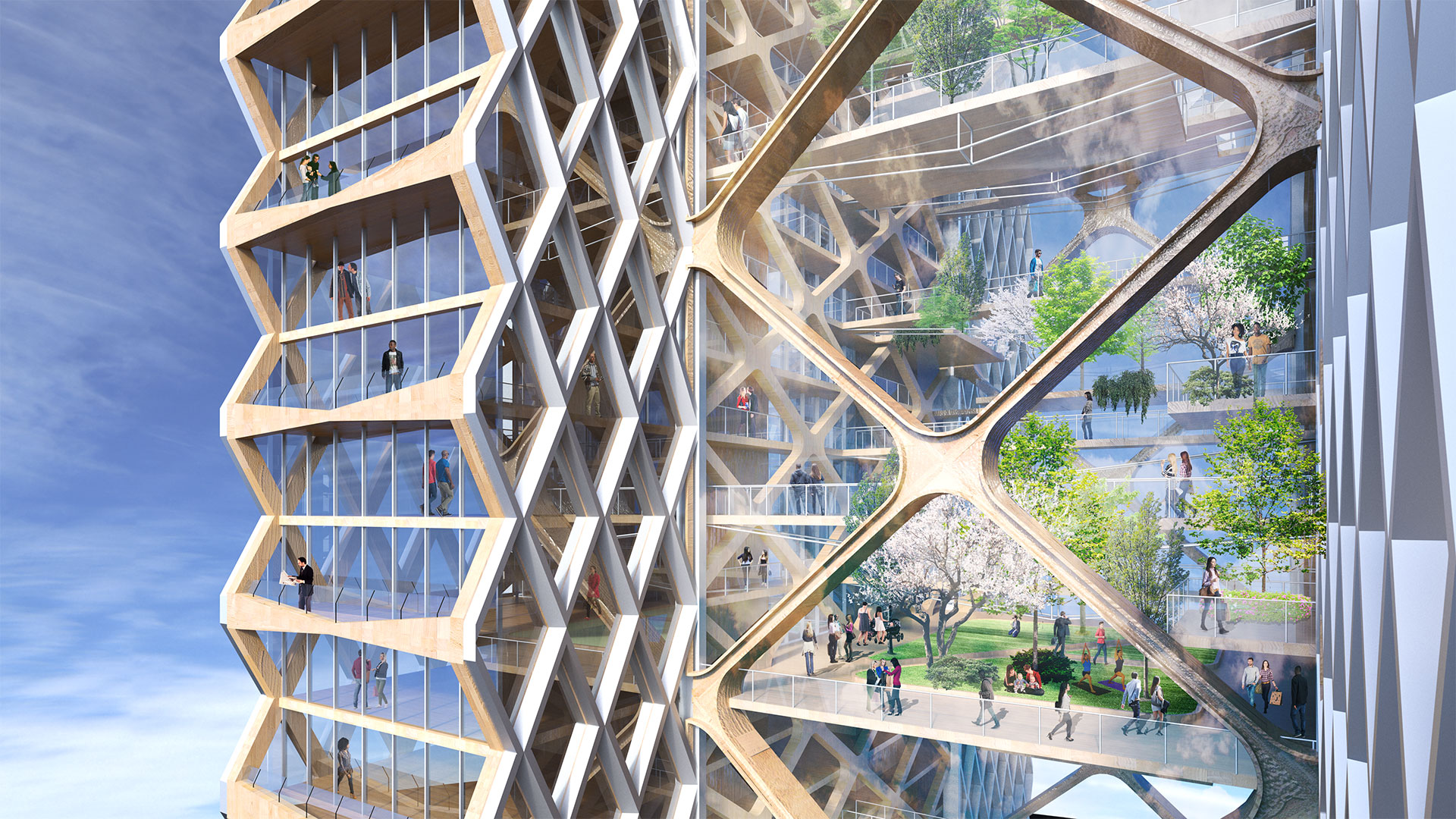As the global community grapples with the challenges of climate change, the housing industry is undergoing a transformative shift towards sustainability. The future of housing lies in green building practices and energy-efficient technologies that not only reduce environmental impact but also enhance comfort and cost-effectiveness for homeowners. This article delves into the key components of sustainable housing, exploring green building principles, energy-efficient technologies, and the potential impact on the future of residential architecture.
Green Building Principles
1. Energy-Efficient Design
- Passive Solar Design: Orienting homes to maximize natural sunlight and heat, reducing the need for artificial lighting and heating.
- Optimal Insulation: High-quality insulation materials and proper installation to minimize heat transfer, maintaining comfortable temperatures.
2. Water Efficiency
- Low-Flow Fixtures: Installation of low-flow faucets, showers, and toilets to reduce water consumption.
- Greywater Systems: Recycling and reusing greywater (wastewater from activities like laundry) for non-potable purposes.
3. Material Selection and Recycling
- Sustainable Materials: Choosing materials with lower environmental impact, such as recycled, reclaimed, or rapidly renewable resources.
- Construction Waste Management: Minimizing waste during construction and recycling or repurposing materials whenever possible.
4. Natural Ventilation
- Cross-Ventilation: Designing homes to facilitate the flow of fresh air through strategically placed windows and openings.
- Ventilation Strategies: Incorporating features like skylights and ventilated facades to enhance natural ventilation.
Energy-Efficient Technologies
1. Solar Power
- Photovoltaic Systems: Installing solar panels to harness sunlight and convert it into electricity for the home.
- Solar Water Heaters: Using solar collectors to heat water for domestic use or space heating.
2. Smart Home Technologies
- Energy Management Systems: Smart devices that optimize energy use by controlling lighting, heating, and cooling based on occupancy and preferences.
- Smart Thermostats: Learning thermostats that adapt to users’ behavior, optimizing heating and cooling schedules for energy efficiency.
3. Energy-Efficient Appliances
- ENERGY STAR Rating: Choosing appliances with the ENERGY STAR label, indicating they meet strict energy efficiency guidelines.
- High-Efficiency HVAC Systems: Installing heating, ventilation, and air conditioning systems that use advanced technologies to reduce energy consumption.
4. Green Roofs and Walls
- Green Roofs: Installing living roofs with vegetation to provide insulation, reduce stormwater runoff, and improve air quality.
- Vertical Gardens: Incorporating vertical gardens or green walls to enhance aesthetics and improve thermal performance.
Certification and Standards
1. LEED Certification
- Leadership in Energy and Environmental Design (LEED): A widely recognized green building certification system that assesses the sustainability of a building’s design, construction, and operation.
- Categories: LEED certification considers factors such as energy efficiency, water conservation, materials selection, and indoor environmental quality.
2. Passive House Standard
- Energy Efficiency Focus: The Passive House standard emphasizes airtight construction, high-quality insulation, and efficient ventilation to achieve ultra-low energy consumption.
- Comfort and Affordability: Passive houses aim to provide superior comfort while reducing energy bills significantly.
The Impact on Future Residential Architecture
1. Integration of Nature and Architecture
- Biophilic Design: Integrating natural elements like plants and water features into architectural designs to enhance well-being.
- Harmony with Surroundings: Future homes may blend seamlessly with their natural surroundings, promoting ecological balance.
2. Decentralized Energy Systems
- Off-Grid Living: Advancements in renewable energy and energy storage may enable more homes to operate independently of centralized power grids.
- Microgrids: Localized energy systems that can efficiently generate and distribute power within a community.
3. Technological Advancements
- Innovations in Materials: Continued research into sustainable and high-performance materials for construction.
- Smart Infrastructure: Integration of advanced technologies for real-time monitoring, maintenance, and optimization of energy systems.
Challenges and Considerations
1. Initial Costs and Affordability
- Upfront Investments: Sustainable features may have higher initial costs, posing a challenge for widespread adoption.
- Long-Term Savings: Emphasizing the long-term economic benefits and energy savings to justify initial investments.
2. Education and Awareness
- Industry Training: Ensuring architects, builders, and homeowners are educated on the principles and benefits of sustainable housing.
- Consumer Awareness: Raising awareness among consumers about the importance of energy-efficient homes and the potential long-term advantages.
Conclusion
The future of sustainable housing lies at the intersection of eco-friendly design, energy-efficient technologies, and a commitment to reducing environmental impact. As the housing industry embraces green building principles and innovative technologies, homes of the future are poised to be more comfortable, cost-effective, and environmentally friendly. With ongoing advancements, increased awareness, and collaborative efforts across the industry, sustainable housing is not just a trend but a pivotal aspect of shaping a more resilient and environmentally conscious future.
